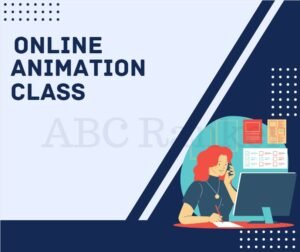1. Who is eligible for animation Introduction
Animation is a versatile and dynamic field that requires a unique set of skills and talents. It is not limited to a specific group of individuals, but rather open to anyone with a passion for creativity and storytelling. Whether you are a recent graduate, career changer, or experienced professional, there are opportunities for you to excel in the world of animation. This blog post will explore the eligibility criteria for pursuing a career in animation and provide guidance on how to get started in this exciting industry.
2. Animation as a career option
Animation is not only a creative outlet but also a viable career option for those with a passion for bringing characters and stories to life. As technology continues to advance, the demand for skilled animators is on the rise across various industries, including film, gaming, advertising, and education.
One of the great things about pursuing a career in animation is the range of roles and specializations available. Whether you aspire to be a character animator, storyboard artist, 3D modeler, or visual effects specialist, there is a niche for every skill set and interest.
Additionally, animation offers opportunities for both freelance work and full-time employment. Many animators find fulfillment in working for animation studios, advertising agencies, or game development companies. Others opt for freelancing, providing their services on a project or contract basis.
In the next section, we will dive deeper into the specific skills and qualifications that are sought after in the animation industry, as well as the educational pathways and resources available for aspiring animators. Stay tuned!
3. Education and qualifications required for animation
While there is no strict educational requirement to become an animator, having a formal education in animation or a related field can greatly enhance your prospects in the industry. Many employers prefer candidates who have completed a bachelor’s degree program in animation, computer graphics, or a similar discipline.
During these programs, aspiring animators usually learn the technical skills necessary for creating animations, such as 2D and 3D animation, modeling, texturing, and rigging. They also gain a deep understanding of storytelling principles, character development, and cinematography.
Aside from formal education, there are various resources available for those looking to acquire animation skills. Online courses, workshops, and tutorials can provide valuable training and help you build a portfolio to showcase your work.
In addition to technical skills, employers often value creativity, problem-solving abilities, and a strong work ethic. Demonstrating these skills through personal projects, internships, or freelance work can also make you more competitive in the job market.
In the following section, we will discuss some essential software and tools that animators use in their work and why familiarizing yourself with them can give you a competitive edge. Stay tuned!
4. Skills and traits needed to excel in animation
In addition to formal education and technical skills, there are certain traits and abilities that can help you excel in the field of animation. While these may not be prerequisites, possessing these qualities can significantly enhance your chances of success.
One important skill is creativity. As an animator, you will be responsible for bringing characters and stories to life. Being able to think outside the box and come up with unique ideas is crucial in this creative field. The ability to imagine and visualize concepts will allow you to create captivating and visually stunning animations.
Problem-solving skills are also highly valued in animation. Whether it’s finding a solution to a technical issue or overcoming a creative roadblock, being able to approach challenges with a strategic mindset is essential. The ability to troubleshoot and think critically will enable you to produce high-quality animations within deadlines.
A strong work ethic is another quality that will set you apart in the industry. Animation projects often require long hours and tight schedules. Having the dedication and discipline to work diligently and meet deadlines will not only impress employers but also ensure the successful completion of projects.
Attention to detail is vital in animation, as even the smallest mistakes can be distracting to viewers. A keen eye for detail will allow you to create animations that are visually polished and free from errors. This attention to detail extends to aspects such as character movement, lighting, and layout, ensuring that every frame is aesthetically pleasing and cohesive.
Lastly, possessing effective communication skills is crucial in the collaborative environment of animation. As an animator, you will often work with a team of artists, programmers, and directors. Being able to clearly convey your ideas, take feedback constructively, and collaborate effectively will contribute to the overall success of a project.
By honing these skills and traits, you can create animations that captivate audiences and stand out in a highly competitive industry. In the next section, we will explore some essential software and tools used by animators and discuss why familiarizing yourself with them can give you a competitive edge. Stay tuned!
5. Opportunities and industries for animators
Now that we have discussed the skills and traits that can set you up for success in the animation industry, let’s explore the wide range of opportunities and industries where animators can thrive.
The demand for skilled animators has been steadily increasing in recent years. The entertainment industry, including film, television, and gaming, is a major employer of animators. In these fields, animators are responsible for bringing characters and stories to life, creating immersive virtual worlds, and enhancing the overall visual experience.
Another industry that has seen a surge in animation usage is advertising and marketing. Animated commercials, explainer videos, and digital advertisements are becoming increasingly popular due to their engaging and attention-grabbing nature. By leveraging animation, companies are able to effectively communicate their brand message and capture the interest of consumers.
Beyond entertainment and advertising, animators also find opportunities in education, e-learning, and interactive media. Educational institutions are incorporating animated content into their curriculum to make learning more engaging and interactive. Additionally, animators can contribute to the development of e-learning platforms, interactive games, and virtual reality experiences.
The architectural and engineering industries also utilize animation to create visualizations of buildings, structures, and infrastructure projects. These animations help architects, engineers, and urban planners present their designs in a more visually captivating and informative way.
Lastly, animators have found a niche in the field of scientific visualization. By creating accurate and visually compelling animations, they are able to explain complex scientific concepts and data in a way that is easier for the general public to understand.
In conclusion, the field of animation offers a wide range of opportunities across various industries. Whether you are interested in entertainment, advertising, education, architecture, or scientific visualization, honing your skills as an animator can open doors to exciting and meaningful career possibilities. In the following section, we will discuss the steps you can take to start a career in animation. Stay tuned!
6. Challenges and growth potential in the animation industry
While the animation industry offers a multitude of opportunities, it is important to be aware of the challenges that may arise along the way. One of the major challenges is the high level of competition. With the increasing number of individuals pursuing a career in animation, it is crucial to continuously upskill and stay updated with the latest trends and technologies.
Another challenge is the demanding nature of the work itself. Animators often face tight deadlines and long hours, especially during the production phase of a project. Attention to detail and patience are essential qualities to thrive in this industry.
However, despite these challenges, the animation industry has immense growth potential. The demand for animated content is only expected to increase, thanks to advancements in technology and the rise of digital platforms. Additionally, the expansion of virtual reality and augmented reality opens up new avenues for animators to explore.
Furthermore, the global reach of animation allows for international collaborations and opportunities to work on projects from across the globe. With the right skills and a strong portfolio, animators can establish themselves as sought-after professionals in the industry.
In the next section, we will delve into the steps you can take to start a career in animation and overcome these challenges. Be prepared to embark on an exciting journey of creativity and innovation!
7. Conclusion: Determine your eligibility for a successful career in animation
Now that we have discussed the challenges and opportunities in the animation industry, it’s time to determine if you are eligible for a successful career in this field. While there is no specific eligibility criteria set in stone, there are certain qualities and skills that can greatly enhance your chances of thriving in the animation industry.
First and foremost, having a passion for animation is crucial. This is not a career path that you should pursue solely for monetary gains. Animation requires dedication, hard work, and a genuine love for the art form.
Secondly, creativity is a must-have skill for animators. You will be expected to come up with unique and innovative ideas to bring characters and stories to life. The ability to think outside the box and push boundaries is invaluable in this industry.
Next, having a strong foundation in art and design is essential. Understanding the principles of drawing, composition, color theory, and perspective will enable you to create visually appealing and coherent animations.
In addition to artistic skills, technical proficiency is also highly valued in the animation industry. Familiarize yourself with industry-standard software and tools such as Adobe Creative Suite, Maya, or Blender. Continuous learning and staying updated with the latest technologies and trends will make you a valuable asset in the field.
Lastly, having effective communication and teamwork skills is important as well. Animation projects often require collaboration and coordination with other professionals like directors, scriptwriters, and sound designers. Being able to effectively convey your ideas and work well in a team environment is crucial for success.
Remember, while these qualities and skills are crucial, they can always be developed and improved upon with practice and dedication. So, if you have the passion, creativity, technical proficiency, and the drive to continuously learn and improve, then you are indeed eligible for a successful and fulfilling career in animation.
In the final section of this series, we will discuss the steps you can take to start your journey in animation and provide some valuable resources to help you along the way. So stay tuned for the exciting conclusion to our guide on starting a career in animation!
Join Now Live Class



